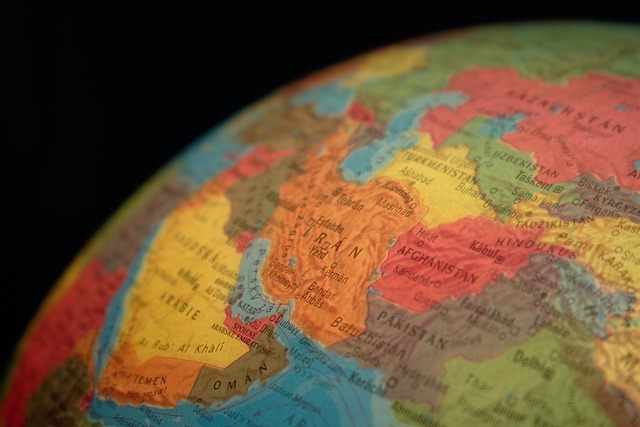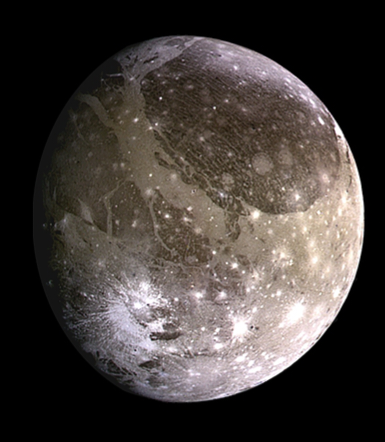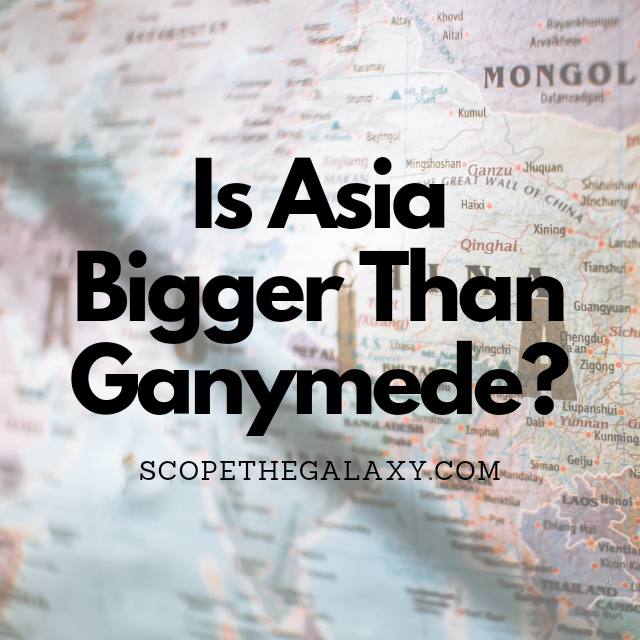*This post may contain affiliate links. This means we may make a commission if you purchase an item using one of our links*
Asia is the largest continent on Earth, while Ganymede is the largest moon in our Solar System. Ganymede has a surface area of 87.2 million sq. km while Asia’s is far lesser at 44.57 million sq. km. In regards to volume Asia’s is 2.78 billion cubic km whereas Ganymede’s is 76.6 billion cubic km.
Although the above statistics show quite clearly which body is bigger, if you want a more detailed look at the elements that make both Asia and Ganymede so big, continue reading as it will be covered below
How Big Is Asia?

Asia is the biggest continent on Earth, covering an area of 44,579,000 square kilometers, equal to 30% of the total land area of Earth or 8.7% of the planet’s total surface area. Asia possesses the highest and lowest points on Earth’s surface, plus it has the longest coastline of any continent.
Asia contains two of the three largest countries in the world: Russia and China, and it holds roughly 60% of the world’s population, with around 4.7 billion people.
We can divide Asia into five major physical regions: mountain systems, plains and deserts, plateaus, saltwater areas, and freshwater environments. Among the most impressive geographic features of the continent are the Himalayas, which extend 2,500km across the Southeast and separate the Indian subcontinent from the rest of Asia.
The Himalayas cover over 612,000 square kilometers of land; they are so vast that they contain three different mountain belts: the Greater Himalayas, Lesser Himalayas, and Outer Himalayas. The Greater Himalayans possess the highest average elevation at 20,000 feet. It also contains nine of the world’s highest peaks, which are all over 26,000 feet tall.
Asia boasts the highest mountain in the world, Mount Everest, which stands at 29,032 feet. The continent also possesses several plateaus, including the vast Iranian plateau, which covers more than 3.6 million square kilometers.
Meanwhile, the West Siberian Plain of central Russia is one of the largest continuous flatlands in the world. This plain has a length of 2,400 kilometers and a width of 1,900 kilometers; over 50% of its total area is lower than 100 meters above sea level.
Asia extends to a length of 11,000km between the Arctic Circle and the Indian Ocean; its width of 8,500km stretches from the Ural Mountains to the Pacific Ocean.
Lastly, if we were to say that the average thickness of Asia’s crust fell around 40km, it would have a volume of 2.78 billion cubic kilometres. This makes it larger still and a significant amount more than all the other continents present on Earth.
How Big Is Ganymede?

Ganymede is the largest moon of Jupiter and the largest object in our solar system not to be properly classified as a planet. It is the only moon with a magnetic field of its own, and one of the few bodies in our solar system known to possess a magnetosphere.
Ganymede has a diameter of 5,262 km and a surface area of 87,200,000 sq. km. Its diameter is lesser Asia, but its surface area is far vaster because the moon is spherical rather than flat. This gives it an impressive volume of 76,600,000,000 cubic km.
This moon is a source of fascination for scientists, with Hubble observations suggesting it may possess an underground ocean. Potentially, this ocean could contain more water than all the water on Earth combined with a depth of up to 100 km – ten times deeper than the oceans on Earth. This ocean is buried beneath a 150 km ice crust.
The terrain of Ganymede falls into two distinct categories: large, bright ridged regions and older, darker ground. This terrain pattern suggests the moon could have been under significant tension from global tectonic processes.
Galileo Galilei first discovered the moon in January 1610; significant because it was the first time scientists observed an object orbiting a planet other than Earth. And this helped us recognize that the Sun lies at the center of our Universe rather than the Earth.
Ganymede formed from leftover gas and dust that remained after Jupiter’s formation, which means that it is roughly the same age as our solar system – 4.5 billion years old.
Three main layers comprise Ganymede; a metallic core, a surrounding mantle of rock, and a top layer of ice. Computer models simulating Ganymede’s makeup show that more ice and oceans could be sandwiched between these main layers. The Hubble Space Telescope also discovered that the moon might have a thin atmosphere of oxygen.
Ganymede is the seventh moon from Jupiter, which orbits at around 1.070 million kilometers away from its planet. This means that Ganymede takes roughly seven Earth days to orbit its planet. While Ganymede is vast – larger than the planet Mercury – it only possesses half the mass of our closest planet to the Sun, classifying it as a low-density object.
Summary
Even if Asia is bigger than Ganymede in regards to diameter with an end to end number practically double Ganymede’s, Ganymede is still far bigger in regards to surface area, where it doubles that of Asia and 35 times the continents volume.
Ultimately when it comes to volume and surface area, spherical objects will always come out bigger than their far flatter counterparts, even if the diameter of said body is half the size of the flatter plain.

